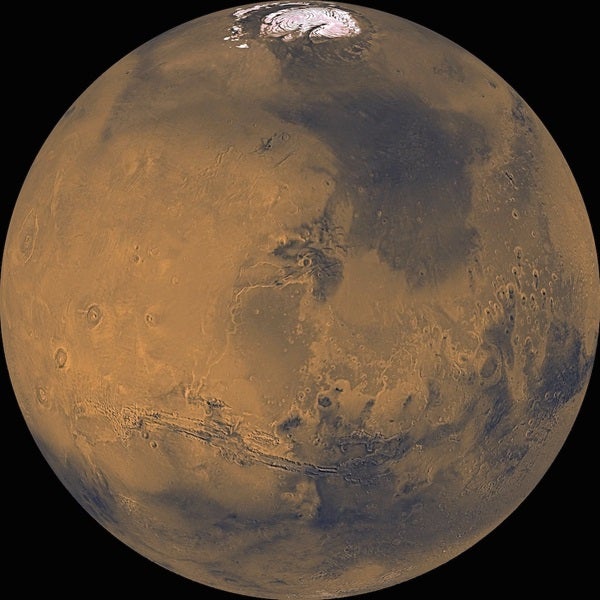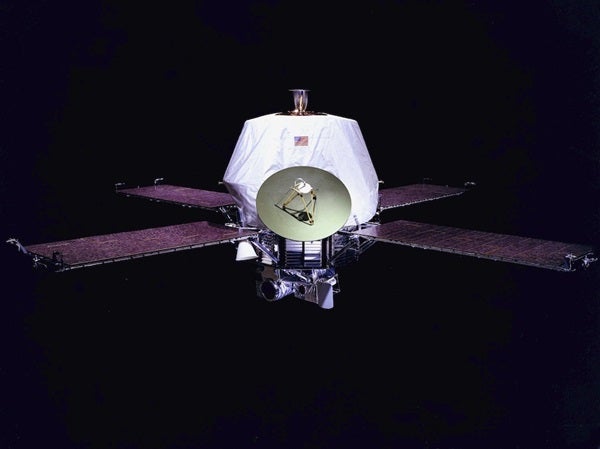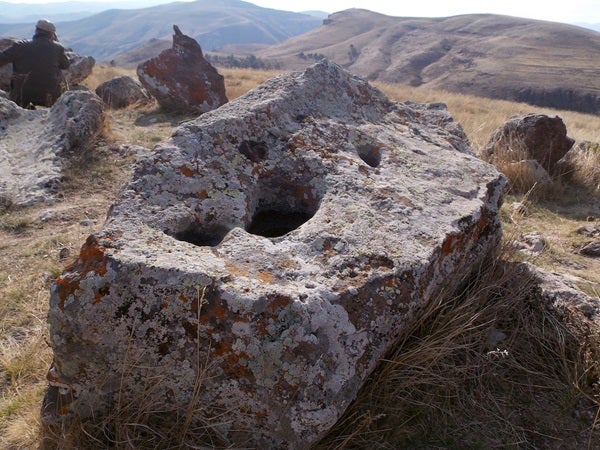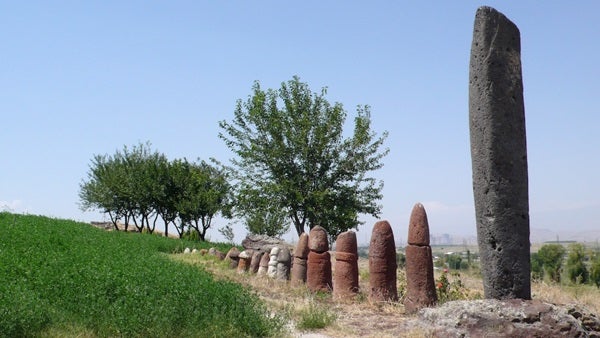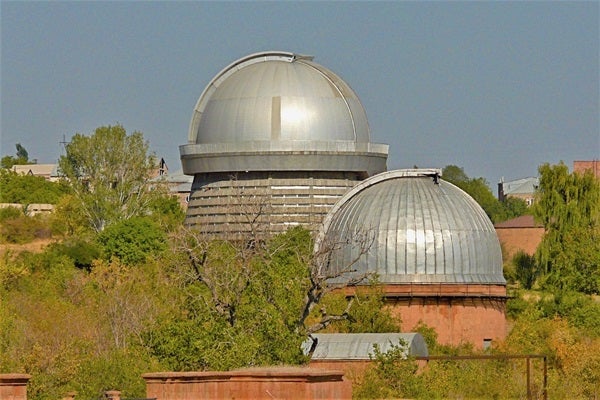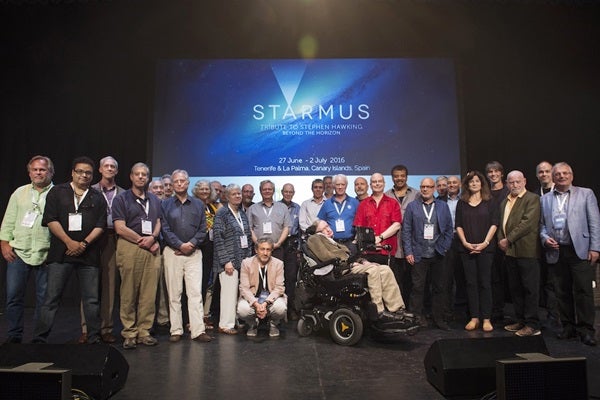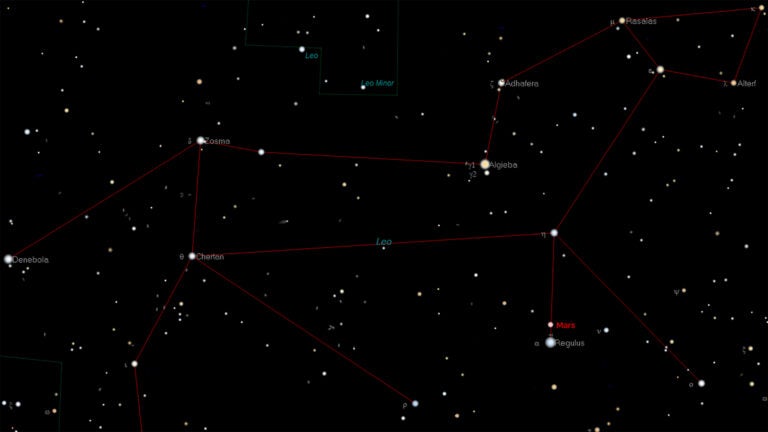Created by Garik Israelian, an astrophysicist at the Instituto de Astrofísica de Canarias in the Canary Islands, and Brian May, astrophysicist and lead guitarist of the iconic rock band Queen, Starmus is a combination of science and music that has featured presentations from prominent figures in many fields, from science to the arts.
Strong support
The festival will be held under the patronage of the president of the Republic of Armenia, Armen Sarkissian, and in partnership with the government. During his invited talk at the opening ceremony of Starmus V, held in 2019 in Zurich, Switzerland, Sarkissian invited the organizers of Starmus to hold the next festival in Armenia.
Sarkissian was elected president of Armenia in March of 2018, and began his five-year term April 9 of that year. On March 26, 2020, he signed into law a package of space activity legislation called Advanced Tomorrow, or ATOM, which promotes educational and economic development and will expand state and commercial space activity.
Armenia’s Ministry of Education, Science, Culture and Sports will support and work in close partnership with the Ministry of High-Tech Industry to ensure that the festival is an outstanding event. Each organization will play an important role in different educational, scientific, and artistic activities.
Focus on Mars
In celebration of 50 years of exploration of Mars, Starmus VI will be dedicated to the Red Planet. In November 1971, NASA’s Mariner 9 became the first spacecraft to orbit another planet. One month later, the Soviet Union’s Mars 3 spacecraft became the first to achieve a successful soft landing on Mars.
Starmus tradition is to address pressing issues and screen films about its focus, and, in 2021, that will be the exploration of Mars. Previous screenings include the documentary Apollo 11 and The Spacewalker, a film about Russian astronaut and Starmus board member Alexei Leonov.
Nobel laureates Edvard Moser and Michel Mayor, Apollo 16 astronaut Charlie Duke, “the father of the iPod” and Nest founder Tony Fadell, and co-inventor of CRISPR gene-editing technology Emmanuelle Charpentier are among confirmed presenters for 2021. The Starmus Advisory Board will continue to announce speakers and performers as they’re confirmed. For more information visit www.starmus.com.
Spectacular setting
Armenia is a country with a tradition of science that stretches back thousands of years. Ancient people there developed one of the world’s first calendars, making the switch to a 365-day year that combined 12 months of 30 days and one month of five days — the same system used by the Egyptians — around 500 b.c. In 2013, the country formed ArmCosmos, the Armenian Space Agency. Its stated goal is to launch the country’s first satellite.
As both a large city and the capital, Yerevan offers visitors a wide variety of activities and institutions, including more than 50 museums. Of interest to Starmus attendees will be the Space Museum, the Museum of Science and Technology, and the Little Einstein Interactive Science Museum.
Beyond Starmus
If you’re planning to visit Armenia for Starmus and your interests are astronomical in nature, I suggest that you spend a few extra days touring both the ancient and modern astronomy sites in the country. Two ancient archaeological sites and one modern observatory are an easy drive from the capital. Starmus organizers are working to arrange tours to these sites. Be sure to sign up early.
The first destination ranks as one of Armenia’s premier ancient sites: Karahunj, often referred to as the Armenian Stonehenge. Its name is a combination of kara, meaning “stone,” and hunj (whose meaning is unclear, but sounds like “henge”).
Karahunj lies 60 miles (96 kilometers) southeast of Yerevan. It sits atop a mountain plateau at an elevation of 5,810 feet (1,770 meters). The site contains 223 stones, which vary in height up to 10 feet (3 m) and weigh as much as 10 tons. For comparison, Stonehenge, located on England’s Salisbury Plain, has roughly 100 stones. Some historians have suggested that the site was an ancient observatory. Various combinations of 17 of the stones line up with sunrise or sunset points at the equinoxes or solstices. Another 14 align with the extreme rising and setting points of the Moon.
— Michel Mayor, Nobel laureate and astrophysicist
When you’re through touring Karahunj, be sure to also visit the Sisian History Museum. Located in nearby Sisian, a town of some 15,000 residents, this small facility houses more than 2,000 regional artifacts, many from Karahunj.
The second ancient site on your list should be Metsamor, an easy 22-mile (36 km) drive due west from Yerevan. It’s just outside Taronik, a village of some 2,000 people, at an altitude of 2,800 feet (853 m). When Metsamor was discovered in 1963, it was determined to be both a metallurgical complex and an industrial center of the ancient world.
Indeed, the area around this site contained deposits of copper, gold, silver, iron, lead, zinc, antimony, mercury, and tin. Tin in particular was not a common metal in the ancient world, but alongside copper, it was an important component for making bronze.
Soon after archaeologists began work at Metsamor, they found a clay plate whose hieroglyph letters matched those of the early second millennium b.c. The letters mimicked the patterns of the 12 zodiacal constellations known at that time. This led researchers to conclude that they had uncovered traces of an observatory where the constellations were named some 4,000 years ago.
The third destination to visit is much more modern: Byurakan Astrophysical Observatory, which lies 21 miles (33 km) northwest of Yerevan. Located at an altitude of 4,600 feet (1,400 m) on the slope of Mount Aragats, it was founded in 1946 by Armenian astrophysicist Viktor Ambartsumian. Among his many contributions was the discovery, in 1947, of stellar associations, which showed that star formation was ongoing in the Milky Way. The facility’s main telescope is a 2.6-meter Cassegrain reflector. It also has two Schmidt telescopes — a 1-meter and a 0.53-meter — for wide-angle imaging.
Beginning in 1965, Armenian astronomer Benjamin Markarian used a full-aperture objective prism, an attachment that records the spectra of thousands of objects simultaneously, on the 1-meter Schmidt telescope to undertake the First Byurakan Survey. The survey was published in the Astrophysical Journal Supplement in 1986. By studying the plates, which revealed galaxies as faint as magnitude 17.5, he discovered 1,500 galaxies that have bluer cores that emit far more ultraviolet radiation than normal galaxies. These objects are now called Markarian galaxies.
Byurakan was also the host for the first Soviet-American Conference on Communication with Extraterrestrial Intelligence. In attendance were Carl Sagan, Frank Drake, Viktor Ambartsumian, Freeman Dyson, and many other notable scientists. Interestingly, the conference took place September 5-11, 1971, exactly 50 years before Starmus VI.
Come join us
The five previous Starmus festivals have been incredible events, but Starmus VI promises to outshine them all. You’ll not only hear scientists and astronauts speak, but also be able to interact with them throughout the event. Add to that the magnificent setting in Yerevan, Armenia, with all the amenities such a large city can offer. Then top it off with easy access to astronomy sites of the distant past and cutting-edge research that will continue far into the future. This is one event you won’t want to miss.

